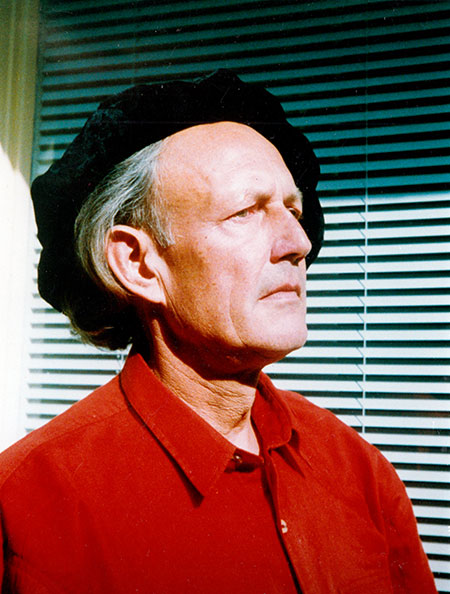
Roland Kayn 1933-2011
When it comes to creative genius, Roland Kayn, born in Reutlingen (Germany) in 1933, might be the most unjustly neglected figure in contemporary music. From 1952 to 1955 he studied organ and composition at Stuttgart’s Staatliche Hochschule fur Musik, as well as scientific theory at the Technische Hochschule, undertaking further composition and analysis studies in Berlin with Boris Blacher and Josef Rufer from 1956 to 1958.
In that year he won the Best Foreign Work prize at the Kairazuwa Festival in Tokyo, and further awards followed in Italy in 1962 and 1964 for his orchestral compositions Vectors I and Schwingungen. Kayn’s discovery of electroacoustic sound synthesis occurred in 1953 at the mythic Westdeutscher Rundfunk Studios in Cologne, and by 1959 he’d had firsthand experience of studio work in Warsaw, Munich, Milan, Brussels and Utrecht. He freelanced in various radio stations from 1959 to 1963, when he was nominated director of New Music at Hamburg’s Norddeutscher Rundfunk.
In 1964 he was one of the co-founders, with Aldo Clementi and Franco Evangelisti, of the Gruppo Internazionale Nuova Consonanza, one of the first European ensembles mixing improvisation and live electronics, and in 1967 organised a simultaneous concert of works by 13 composers that included electronic, concrete, electro-instrumental, computer and cybernetic music, an event that reached its definitive form in Hamburg in 1970.
In Bonn in 1975 he staged an ambitious project in which performance, music, and computer workshops took place several locations at the same time, and the following year promoted a series of simultaneous non-stop shows in Amsterdam’s Van Gogh Museum based on the theme “From Carillon to Computer”, during the course of which debates, seminars and computer-assisted electroacoustic music performances were held.
Since 1970 Kayn was based in the Netherlands, playing an active role of the cultural department of Amsterdam’s Goethe Institute, developing artistic initiatives and important concerts of contemporary music. From his student days onwards, Roland Kayn was always more influenced by data processing theory than by the work of fellow composers (no surprise then that the shock generated by his composition Aggregate in 1959 led to his being declared persona non grata by the so-called avant-garde establishment), and began using the term “cybernetics” to define his own music, in which complex networks of electronic devices follow the composer’s instructions in the form of a system of signals and commands. Words such as “harmony”, “melody” and “rhythm” no longer apply; the idea that a musical work should be defined in minute detail by its composer is anathema to Kayn, who insists that cybernetic music should be self-regulating, leaving behind both the narrative element and the psycho/emotional minutiae usually associated with the notions of “composer” and “art”. Even the person behind the system cannot predict the final outcome, since the processes have no real epicentre, and each sound is of equal weight and importance in relation to the others. “Music is sound, and sound is self-sufficient,” Kayn declares emphatically.
Massimo Ricci
Timeline
1933
Roland Kayn was born on 3 September 1933 in Reutlingen, Germany.
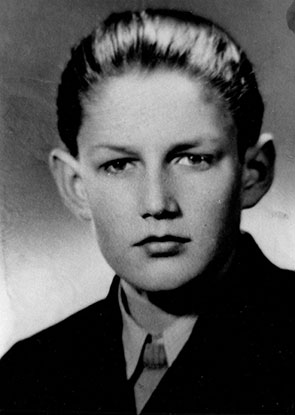
1947
First performances on piano and violoncello. At the same time, Kayn began studying harmony and counterpoint under the guidance of Hugo Herrmann, who also lived in Reutlingen.
Kayn as a pupil of Hugo Hermann, 1947.1950
The first determining impression of modern music.
1951
First compositions: Orchestral piece No. 1 Metanoia and Chamber Concerto for six solo wind instruments and percussion.
1952
Beginning of music studies at the State College of Music in Stuttgart and at the Church Music School in Esslingen (Tonsatz with Alexander von Albrecht and Helmut Bornefeld, piano with Alfred Kreutz and Helmut Rothweiler, and organ with Karl Gerok). Kayn composes Variationen über ein Thema von Gustav Mahler for orchestra (score lost) and Fünf kleine Klavierstücke.
1953
Continuation of music studies and participation in the Max Benses working group at the Technical University of Stuttgart. Composes Meditations for organ, performed in 1955 by Kayn’s friend Martin Rössler from Südwestfunk, Tübingen.
1954
Gets connected with Herbert Eimert. Guest in the electronic studio of the NWDR, Cologne. Composes the Absurde Kantate based on texts by Kaspar-Thomas Lenk for baritone, speaker, choir and instruments as well as the organ work Evokation.
1955
Divertimento for two pianos is established. Klavierstücke, Tokkata for violin and piano, Songs after texts by Günther-Bruno Fuchs and Stenogramme after texts by Kaspar-Thomas Lenk are premiered in a concert series featuring the Studio for New Music in Reutlingen. Orchestrates the organ piece EVOKATION and TOKKATO for violine and piano (1954), for gran orchestra. Metamorphoses for clarinet and orchestra and completes his graduation examination as an organist.
1956
Kayn meets Hans-Heinz Stuckenschmidt in Hamburg and follows his recommendation to continue studying with Boris Blacher in his masterclass at the Staatliche Musikhochschule in Berlin. In 1958 Kayn would continue this course of studies, in addition to seminars with Josef Rufer, Fritz Winckel and Oskar Sala. Participates for the first time in the International Holiday Courses for New Music in Darmstadt. Beginning of friendship with Franco Evangelisti and Camillo Togni. Kayn begins work on Sequenzen for orchestra.
1957
Première of Spektren for string quartet at the International Holiday Courses in Darmstadt. Receives the Hamburg Bach-Prize and finishes Quantum for piano. Works on the exploration of new sound structures in the instrumental field.

1958
Kayn’s Kammerkonzert is premiered as part of the Musik der Zeit series by the NWDR, Cologne. Receives the first prize for best work by a foreigner at the Karuizawa Festival in Japan. At this time, Kayn also decides to pull all compositions written until 1955. Aloys Kontarsky premières Quantum in Darmstadt. Hessischer Rundfunk in Frankfurt commissions Kayn to compose Aggregate.
Prize winner at the Karuizawa Festival, Japan 19581959
Bruno Maderna conducts the première of Aggregate in Darmstadt. Kayn meets Jozef Patkowski, director of the experimental studio of the Polish Broadcasting Corporation, and receives an invitation for a stay in Warsaw. Kayn begins work on the electronic composition Impulse.
1960
Kayn receives the Rome Prize and is living in Rome. He collaborates with the Gruppo Universitario Nuova Musica (GUNM) in Palermo and acts as co-organizor of the first Settimana Internazionale Nuova Musica, where the première of Spektren is given. Kayn completes the electronic composition Impulse for seven loudspeaker groups, as well as the score for Vectors I for chamber orchestra, and develops the basic model for Vectors II.
1961
Design of the graphical score for Phasen – Obelisk für Auschwitz for vocal sounds and four percussion groups. Andrzej Markowski conducts the premiere of Vectors I at the Music Biennale in Venice.
1962
Kayn is staying in Rome and Venice, and premières Phases – Obelisk für Auschwitz at the Festival Internazionale di Musica Contemporanea in Venice. Kayn wins second prize at the Concorso Internazionale di Composizione della SIMC in the chamber music category for his score of Vectors I. The first Polish performance of Vectors I takes place at the Warsaw Autumn Festival. Kayn also works in the electronic studio of the NWDR in Cologne and in the Siemens studio in Munich. He completes the score for Galaxis, a multiple sound-structure for variable instrumental ensemble, and works on the score for Allotropie for multiple instrumental formations.
1963
Première of Schwingungen for five sound groups (which emerged in 1961-62 as commissioned by the city of Hamburg) at the Settimana di Nuova Musica in Palermo, Italy. Schwingungen is awarded the second prize at the Concorso Internazionale di Composizione della SIMC. Kayn is commissioned by Südwestfunks Baden-Baden to compose Inerziali for five to twenty players.
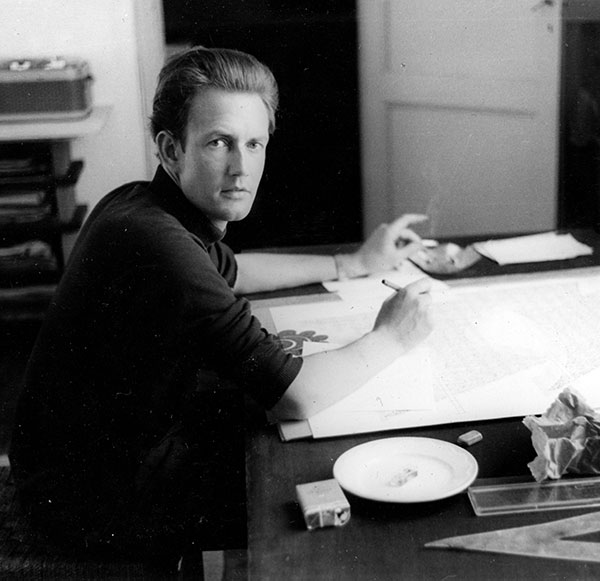
1964
Foundation of Gruppo di Improvvisazione Nuova Consonanza together with Aldo Clementi and Franco Evangelisti, where Kayn participates as an organist. Completion of Allotropie. In the course of Kayn’s work, there are increasing compositional methods of editing which have their starting point in the resolution of acoustical-physical problems. Kayn finds essential stimulus from the fields of information theory and non-goal-oriented cybernetics. His development runs in the direction of the serial aleatory tendencies of the 1950s, which Kayn defines through the term cybernetic music. In the instrumental area, there are processes of automatic-electronic provinces, which appear to be linked to the organic-sensitive (Galaxis, Allotropie).
Kayn working on Allotropie in Rome, 1964.1965
Preparation of the score for Diffusions for 1-4 electronic organs. The piece is recorded at the NDR in Hamburg, Radio Bremen, Vara Hilversum, and other places. Kayn participates in concerts in Rome and Florence with the Gruppo Internazionale d’Improvvisazione Nuova Consonanza. World première of Inerziali in Donaueschingen. Schwingungen receives first prize at the Biennale de Paris.
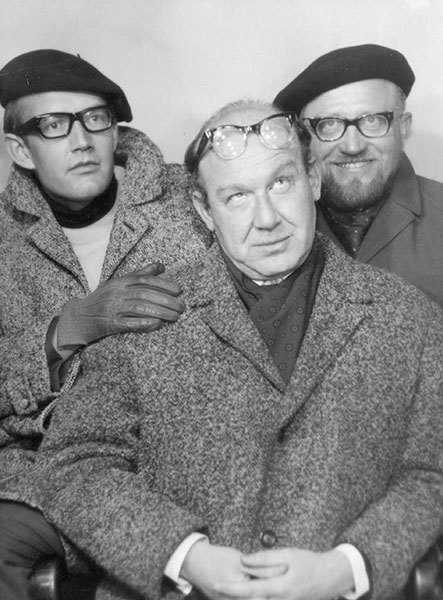
1966
Pierre Boulez conducts the première of Signals for seven sound groups in the series das neue werk of the NDR, Hamburg with an outstanding audience resonance. Andrzej Markowski performs Allotropie with the Orchestra Sinfonica della RAI Torino for the first time at the Warsaw Autumn Festival. Preparations begin for Cybernetics I (an electronic piece).
“Nuova Condolenza,” 1966. From left to right, Kayn, Andrzej Markowski, Zbigniew Wiszniewski.1967
Kayn receives an invitation to participate as a jury member at the Paris Biennale. Gruppo Nuova Consonanza makes recordings in Rome, and Kayn participates in a television documentary produced by the NDR Hamburg in Rome about the group. At this time, he also finishes Vectors II for orchestra.
1968
The electronic composition Cybernetics I is realised in a provisional studio at the NDR, Hamburg. Kayn also completes the first version of Cybernetics II for seven choir groups, sound producers, sound sources, live electronics, and tape. Preparatory work for Cybernetics III begins, using only vocal sounds of humans and animals as the starting material. The French première of Schwingungen takes place at the ORTF in Paris under conductor Charles Bruck. At this time, Kayn decides to leave Gruppo Internationale d’Improvvisazione Nuova Consonanza. In cooperation with Karl-Erik Welin, Torsten Nilsson and Gunnar Valkare, Diffusions premières in quadraphonic sound for Sveriges Radio in Stockholm.
1969
Cybernetics III is produced in the Studio di Fonologia della RAI, Milan, and premières at the Festival Internazionale di Musica Contemporanea in Venice. Sequenzen premières at the NDR’s Tage für Neue Musik in Hanover.
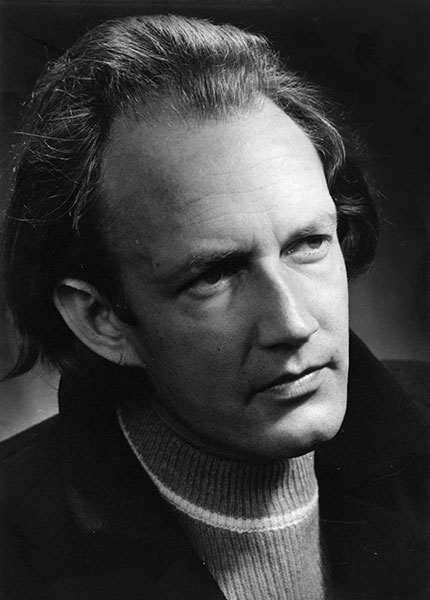
1970
Completion of the definitive version of Cybernetics II. Kayn receives an invitation to work in the studio of the Instituut voor Sonologie of the Rijksuniversiteit in Utrecht. Realisation of Entropy PE 31. Kayn is appointed to the juries of the International Gaudeamus Composition Competition and the Angelicum Edizioni-Suvini-Zerboni Competition in Milan, and is invited to be a speaker at the Goethe-Institut in Amsterdam. In collaboration with the Gaudeamus Foundation in Bilthoven and VARA-Radio Hilversum, Kayn helps to establish the Forum der neuen Musik series at the Goethe-Institut, and in collaboration with other museums and the Goethe-Institut creates the series film + experiment, which would run nationwide until 1989 in ten cities. Rolf Liebermann suggests the possibility of organizing a simultaneous concert at the Staatsoper in September where all the rooms would be devoted to the electronic music of various studios. Entropy PE 31 premières in Hamburg. Press articles echo versatile responses of approval and disapproval of Kayn’s style.
Kayn in 1970.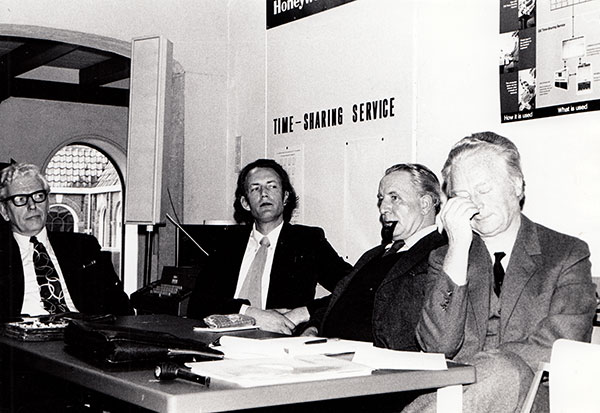
1971
The electronic composition Monades is realised at the Instituut voor Sonologie in Utrecht. In the context of the exhibition Computer + Kunst in Amsterdam, Kayn, Max Bense, Jan Aler, and others participate in a symposium on the topic organized by the University’s Institute for Esthetics. Kayn completes Aggregates sonores for orchestra, and marries Lydia Onrust.
Kayn at the “Computer + Kunst” Symposium in Amsterdam, March 1971. From left to right, A. B. Frielink, Kayn, Max Bense, Jan Aler.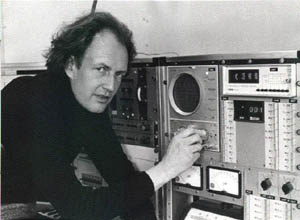
1972
Kayn completes work on Simultan, a cybernetic-electronic project for 1-5 rooms, and experiments in the Studio de Recherche et de Structurations électroniques Auditives in Brussels. He also designs Circuits intégrés for 1-4 pianos, 1-6 drums, live electronics, and tape, and participates in the International Congress of Musical Graphics organised by the Istituto Latino-americano in Rome. Kayn’s daughter Ilse-Emily is born.
Kayn at the Institut voor Sonologie, Utrecht, 19721973
Kayn premières Circuits intégrés alongside Peter Roggenkamp at the Stedelijk Museum in Amsterdam on November 25, as well as in The Hague, Utrecht, and Eindhoven. Vectors II for orchestra is premièred at the Venice Biennale by Andrzej Markowski and the NDR Symphony Orchestra, Hamburg. The organist Karl-Erik Welin plays Meditations for organ in a concert in Stockholm. Daniele Paris conducts the Italian premiere of Inerziali in Rome at the Nuova Consonanza Festival.
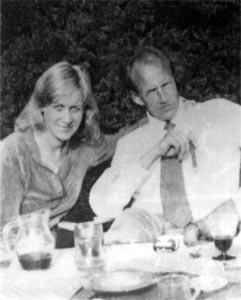
1974
Les Percussions de Strasbourg and Radio-Kamerkoor Hilversum performs Phasen in Amsterdam at the Concertgebouw, in Rotterdam at the Concertgebouw De Doelen, in Eindhoven at the Philips-Centrum, and in Brussels at the Palais des Beaux Arts. Conductor Paul Hupperts takes over the studio production of Vectors I with the Radio-kamerorkest, Hilversum. Vectors II is performed by Andrzej Markowski with the Rundfunk Sinfonie-Orchester Frankfurt at the Festival Warschauer Herbst and achieves a sustained resonance. At the Kunsthalle Bremen, Simultan premières, commissioned by Radio Bremen for the series pro musica nova. The exhibition Roland Kayn – Graphical scores and documents complements the daily twice-running demonstrations. Kayn is commissioned by Radio Hilversum to design a four-part radiophonic project for their Komponist + Radio series (Versuch eines Musik-Atlas). Following the Arnold Schönberg Memorial Exhibition hosted by the Van Gogh Museum in Amsterdam, Kayn takes the initiative to establish an annual Schoenberg Piano Competition for the Goethe-Institut and the Gaudeamus Foundation in conjunction with Rotterdamer Art as a carrier organization. For bureaucratic reasons Kayn is put under pressure by his employer, the Goethe Institute in Amsterdam, and, with the support of the union for education and science, follows a lawsuit that drags on till 1993, and is finally won by the composer.Kayn completes the score for Engramme for 15-60 instruments.
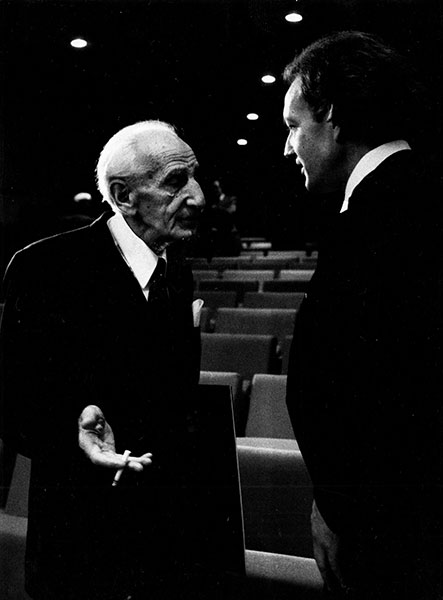
1975
Kayn participates in the Festival Internationale de la Musique Experimentale in Bourges with the French première of Simultan in the Maison de la Culture. The New Music Days in Bonn are dedicated to Roland Kayn. Daily performances of Simultan take place over 32 channels, workshops, band demonstrations of instrumental music, and discussions are held non-stop in the studio and the foyers of the Beethoven-Halle. Kayn meets with director Wolfram Mehring (Théatre de la Mandragore, Paris) and discusses plans for scenic adaptations of Kayn’s electronic music. In Utrecht Studio, Eon and the orchestral work Ektropie with choir are finished.
Kayn in conversation with Max Deutsch on the occasion of the opening of the Schönberg-Gedachtnis exhibition, van Gogh Museum, Amsterdam, October 19, 1975.
1976
The exhibition From music box to music computer takes place in all the rooms at the Van Gogh Museum in Amsterdam, in collaboration with the Van Gogh Museum, the Goethe Institute and the Stichting Contactorgaan Electronic Muziek u.a. Concerts, automatic music, listening stations, documentaries, films, and workshops all take place, including a performance of Simultan featuring a live analogue computer program. The events are very popular in the media, but they also provoke a sharp protest from some museum visitors.
Flyer for the exhibition “From music box to music computer” at the van Gogh Museum, Amsterdam, January 1976.1977
Kayn continues his research into sound at the Instituut voor Sonologie and has a fruitful collaboration with Jaap Vink, where he develops new production techniques based on retroactive electronic switching systems. Kayn produces Makro I-III and discusses the concept of spatial projection of electronic music in combination with specially-designed airfoil constructions with architect Frei Otto. Kayn produces a series of radio programs for Süddeutschen Rundfunk, Stuttgart titled Composing Between the Computer and Cybernetics. Vectors III for two orchestras is produced.
1978
The ensemble Theateraction at the Théatre de la Mandragore performs the scenic adaptation of Makro I as Cosmic Circus under the direction of Jo Roehrig at the HOT-Theater in The Hague, along with 25 performances at the Theater aan de haven. Kayn produces live electronic versions of Quanten, Diffusions, and Circuits intégrés in the experimental studio of the Heinrich Strobel Foundation in Freiburg. Kayn becomes a member of the advisory board for the Donaueschinger Musiktage. Syn for two choirs and orchestra is finished.
1979
Performance of Makro II at the Warsaw Autumn Festival. Leo Küpper presents Makro and parts of Kayn’s new electronic project Infra in South America, Vienna and Stockholm. Kayn gives a lecture at the Instituut voor Sonologie der Rijksuniversiteit, Utrecht, on the topic of cybernetic music. The Goethe-Institut series Forum der neuen Musik is concluded, following the result of a directive by the institute’s secretary general.
1980
Premiere of Engramme in the Musik unserer Zeit series by the SDR, Stuttgart, with Peter Eötvös as conductor. Szabolcs Esztényi conducts the Polish première of Quantum at the Warsaw Autumn Festival. The Dutch premiere of Vectors II takes places by the Residentie-Orkest at Congresgebouw in The Hague, and at Concertgebouw in Amsterdam.In the context of the events accompanying the exhibition „Für Augen und Ohren“ (For eyes and ears) at the Berlin Academy of Art, the ensemble „Theateraction“ debuts MAKRO/COSIMIC CIRCUS in Germany and, at the Festical in Orleans, in France.Kayn is awarded DM 2.47.- by GEMA for the performance of Simultan at the International Festival, Bourges, 1975.
1981
The Studio Teatr in the Palace of Culture in Warsaw gives five performances of Cosmic Circus at the Warsaw Autumn Festival. Work on the electronic project Tektra is completed at Studio Utrecht. Divertimento for two pianos – composed in protest against the perceived ‘serial dictatorship’ in 1955 – is performed in Amsterdam for its world premiere by duo Schouten-Ekkel. The Argentinian section of the ISCM presents Makro as part of their concerts at the Museo Nacional de Bellas Artes, Buenos Aires. The Internationale Arnold-Schönberg-Klavierwettbewerb (the international Arnold Schönberg competition) is terminated on instructions from above.
1982
Ready-Made I and II are composed during an intensive working phase over the summer months. The advisory committee for the Donaueschinger Musiktage is quietly abolished. Kayn starts work on his electronic cyclically wide-spread project Scanning, and on the choral and instrumental work Chreodes. Dino-Concerto is composed in the form of a spontaneous improvisation for his wife Lydia.
1983
The German Music Council publishes Vectors I as a vinyl record. The composer celebrates his fiftieth birthday on 3 September. Kayn finishes up work on Scanning.
1984
The electronic works Assemblage, Collage, and Decollage are created in rapid succession. Kayn takes part in the Ars Electronica Festival in Linz with the première of Ready-Made I and II. Chreodes is finished.
1985
Kayn revises his 1953 organ piece Evokation.
1986
Kayn composes Meta for clarinet according to his piece Metamorphosen from 1955.
1987
Cybernetic Serendipity is realized at the Department of Sonology at the Koninklijk Conservatory in The Hague. Kayn makes a revised version of orchestral work No. 2, Evokation und Tokkata.
1988
Kayn revises his orchestral piece No. 1 from 1955, Metanoia, and Metamorphosen for clarinet and orchestra from 1955. A reconstruction of the Düsseldorf exhibition Degenerate Music from 1938 is presented with an expanded Dutch part at the Concertgebouw in Amsterdam, in connection with the Goethe Institute, the Haags Gemeentemuseum, the Stichting Gaudeamus, and others. Kayn composes Supra for orchestra.
1989
The electronic composition An artificial acoustic environment is created.
1990
Kayn completes work on the electronic piece Transflexion.
1991
Provisional work wraps up on Kayn’s electronic piece Syzygy Dynamical Units.
1992
Final work on the score for Mitra – sounding ways for orchestra. Kayn begins a phase of painting.
1993
Die INTERFACES für disponibel besetz- und regelbares Orchester entstehen. Italian première of Kammerkonzerts in Rome.
1994
Kayn composes Multiplex for orchestra.
1995
Kayn founds the International Lydia and Roland Kayn Archive in ‘s-Graveland. The legal dispute with the Goethe-Institute is settled.Kayn retires and spends part of his time at his Landhuisje near Orvelte, Drenthe province, Netherlands, and begins to publish a series of his works on his own CD label Reiger-records-reeks. The piece Kristallnacht is created.
1996-97
Kayn completes the score for Multiplex. A series of electronic compositions, initiated with Syntropie and ending with his six Electronic Symphonies in 1997, are produced in rapid succession.
1998
A legal dispute with the Goethe Institute, which arose again in 1992, was successfully concluded. Electronic Symphony VII and VIII is completed. Kayn reaches official retirement age.
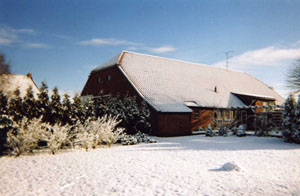
1999
Kayn perfects his ninth Electronic Symphony and relocates to a hundred year old farm in east Groningen, where he establishes living quarters, his archive, a studio, and a concert hall/exhibition space. The Concertzender, Hilversum presents the three-hour electronic work Infra integrally, which was first realised in 1978-79 in Utrecht. Kayn releases his 6th and 7th Electronic Symphonies as a double CD, and finishes his 10th.
Kayn’s farmhouse, Winter 19992000
The electronic works Gärten der Lüste and L’innominata are realised and published.
2001
Kayn composes the tape piece Megaphonie, which is immediately followed by Ultra. The demand for Kayn’s works on CD and LP grows. Kayn finishes his composition Sound-Hydra in the summer. Shortly before the end of the year, Kayn completes his five-part composition Extensity.
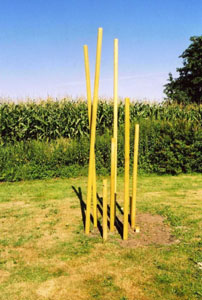
2002
Kayn experiences deteriorating health. As a result, seven large-scale electronic pieces are created, which lead to a new stylistic critique through his composition Requiem pour Patrice Lumumba. In Den Bosch, Kayn’s piece Kristallnacht from 1995 is premièred in concert at the Muziekcentrum for the Earational Festival.
‘Garden gadget,’ an installation piece built by Kayn in the back yard of his farm.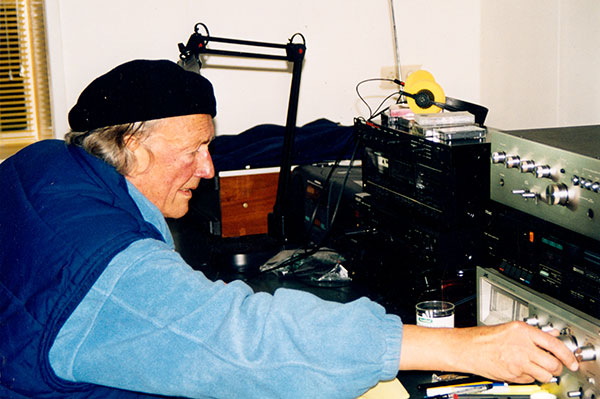
2003
Kayn’s score Diagonal-Sinfonie for orchestra, started in 1998, is released. As in the previous year, a series of eight large-scale tape compositions emerge, beginning with Invisible Music and ending with Mantaru. Kayn releases Ultra, Redundancy TR, and Megaphonie on his Reiger-records-reeks label. Tektra sees a re-release on Barooni Records in CD format. Kayn’s works are featured in a series of electronic works played as an all-night marathon from midnight to 8 AM on September 3 at Concertzender Hilversum. At the end of the year, the integral premiere of Makro (1977) took place at the Neues Museum Weserburg in Bremen, Germany, on December 26 as part of the event series REM (Reihe Elektronischer Musik).
2004
Kayn works continuously on electro-acoustic projects in the Reiger recording studio at his home. In addition to Interations, Composizione AD, and Prismes reflectes, Kayn’s Requiem pour Patrice Lumumba is published on CD, with the latter work being inspired by a conversation with Polish conductor Andrzej Markowski in Venice, 1961.
2005
The AXES Foundation in Eindhoven hosts Festival DE LANGE ADEM together with a 10.5 hour première of Kayn’s piece Scanning, along with video projections by young artists. Few visitors and a non-judgmental local press review are the result. The Concertzender in Hilversum, however, translates the unreal into being and, over the course of two night programs, plays the entire ten hours of Scanning.

2006
Within the scope of the Nieuwe Muzieknacht hosted by the Concertzender Hilversum on June 12, the composition Hommage a K. R. H. Sonderborg is played, along with Invisible Music on July 31. Kayn works intensively in the Reiger recording studio, completing a series of electronic pieces. At the end of the year, a double CD box plus DVD documentary about the Gruppo di Improvvisazione Nuova Consonanza is released, which includes Kayn’s time with the group.
Kayn in 2006.2007
Continuation of work in Reiger recording studio.